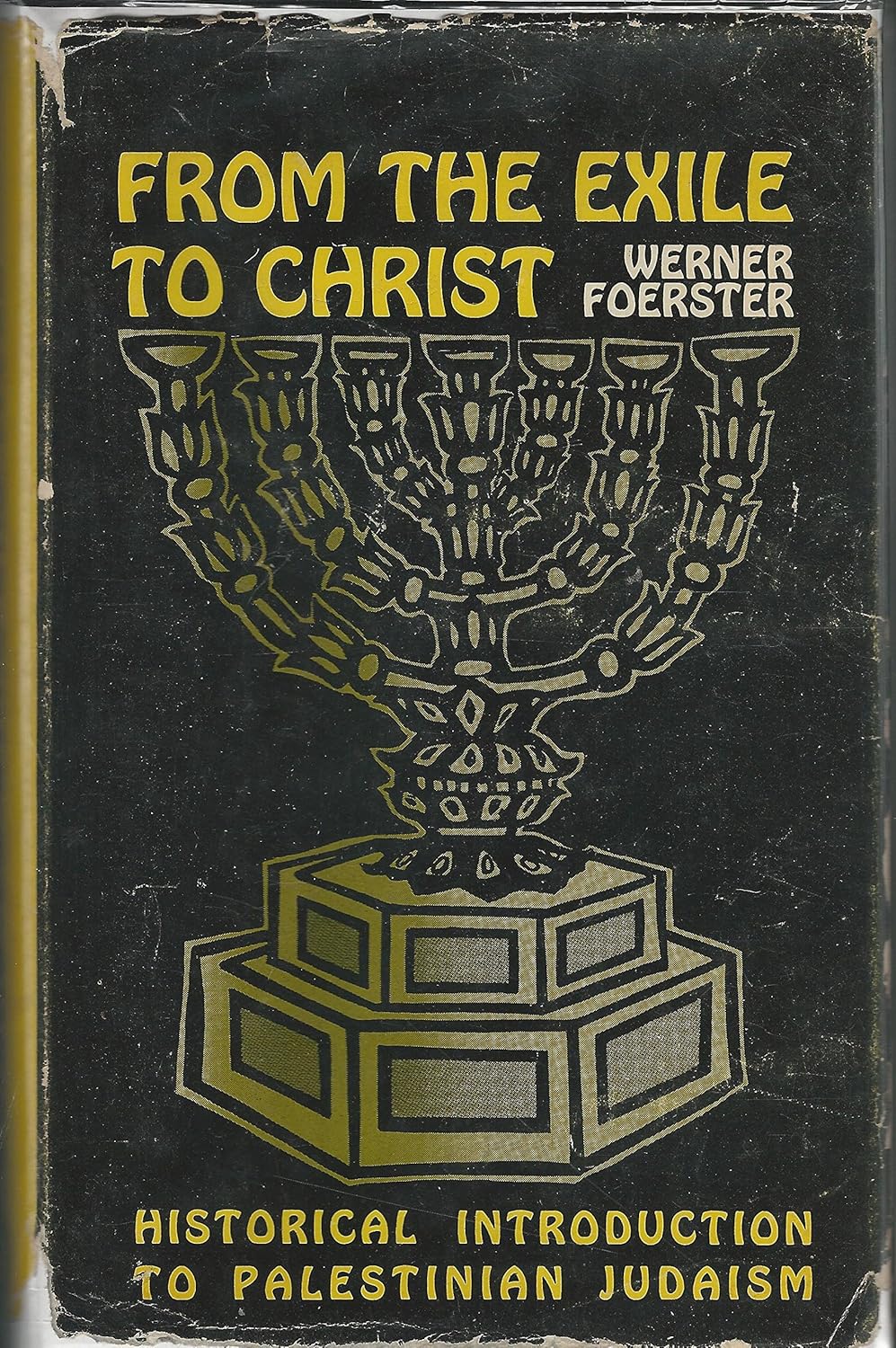Hardcover, 247 pages
English language
Published 1964 by Fortress Press.
A Historical Introduction to Palestinian Judaism

Hardcover, 247 pages
English language
Published 1964 by Fortress Press.
The publication of this volume makes available for the first time in English a standard handbook on the origins of Judaism and on the Jewish world in New Testament times. Readers and students of the Bible who wonder what happened "between the Testaments" or who want to know about the Jewish setting of the the New Testament will find this an excellent introduction that combines the advantages of a historical treatment with those of a systematic presentation. Those whom the discovery of the Dead Sea Scrolls has alerted to the vitality of Palestinian Judaism and its importance in the New Testament world will welcome the discussion of the scrolls which the author has interwoven with his treatment.
The book begins at the Exile (586 B.C.) since it is here, says Dr. Foerster, that certain basic characteristics of Judaism emerge: the waning of prophecy, the stress on the Law, circumcision, and …
The publication of this volume makes available for the first time in English a standard handbook on the origins of Judaism and on the Jewish world in New Testament times. Readers and students of the Bible who wonder what happened "between the Testaments" or who want to know about the Jewish setting of the the New Testament will find this an excellent introduction that combines the advantages of a historical treatment with those of a systematic presentation. Those whom the discovery of the Dead Sea Scrolls has alerted to the vitality of Palestinian Judaism and its importance in the New Testament world will welcome the discussion of the scrolls which the author has interwoven with his treatment.
The book begins at the Exile (586 B.C.) since it is here, says Dr. Foerster, that certain basic characteristics of Judaism emerge: the waning of prophecy, the stress on the Law, circumcision, and the Sabbath, and the prominence of the "three pillars," canon, synagogue, and the rabbis. It concludes with the final destruction of Jerusalem during the Bar Cochba revolt (135 A.D.). The author's judicious use of the sources confronts the reader with the men who shaped the period--Ezra, Alexander, the Maccabees, the Hasidim, the Herods--as well as those to whom we are indebted for a record of it: Philo, Josephus, the Essenes, the rabbis, and others.